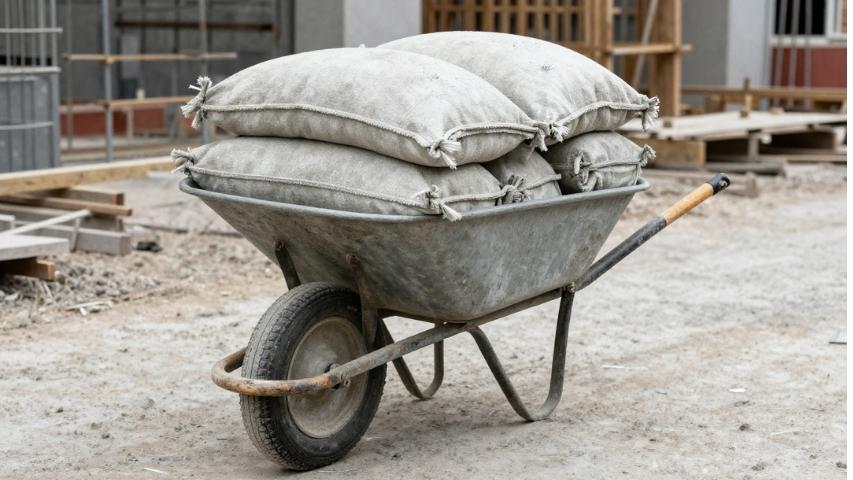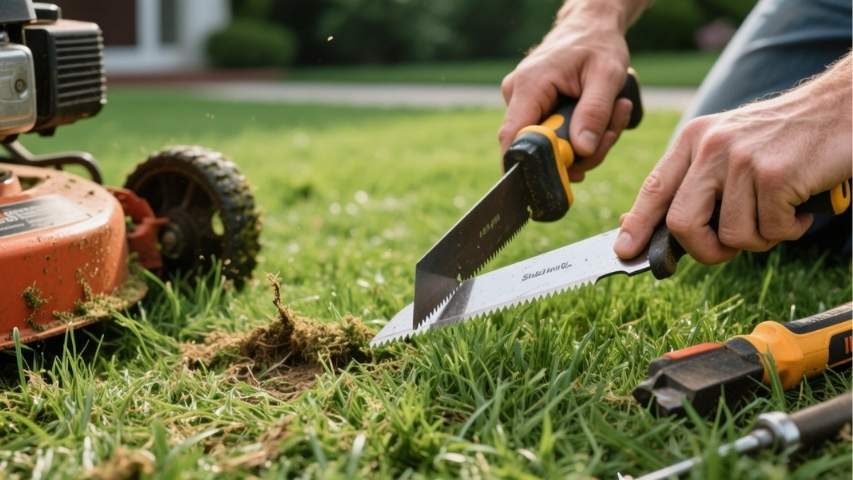If you’re wondering what you can plant in your flower bed right now in California, you’re not alone. With its diverse climate, ranging from coastal breezes to desert heat, California offers gardeners the opportunity to grow flowers year-round. However, knowing what thrives in the current season and your specific region can make all the difference.
This guide covers the best flowers to plant now, tips for successful gardening in California, and how to keep your flower bed thriving, whether you’re a seasoned gardener or just starting.
Understanding California’s Unique Gardening Zones
Before you start planting, it’s important to understand California’s gardening zones. The state spans USDA Zones 5b to 11a, which means the climate varies greatly depending on where you live. For example:
- Coastal areas (e.g., Los Angeles, San Diego): Expect cooler temperatures and more consistent weather year-round.
- Central Valley (e.g., Fresno, Sacramento): These regions experience hot summers and cool, foggy winters.
- Mountain regions (e.g., Lake Tahoe): Cooler climates with shorter growing seasons.
- Desert areas (e.g., Palm Springs): Hot and dry conditions dominate, with limited water availability.
Understanding your zone will help you choose flowers that will thrive where you live. Use the USDA Hardiness Zone Map as a reference, or ask your local nursery for specific recommendations.
What to Plant in Your Flower Bed Now
Here’s a breakdown of what flowers to plant depending on the season and California’s diverse climates.
Early Spring
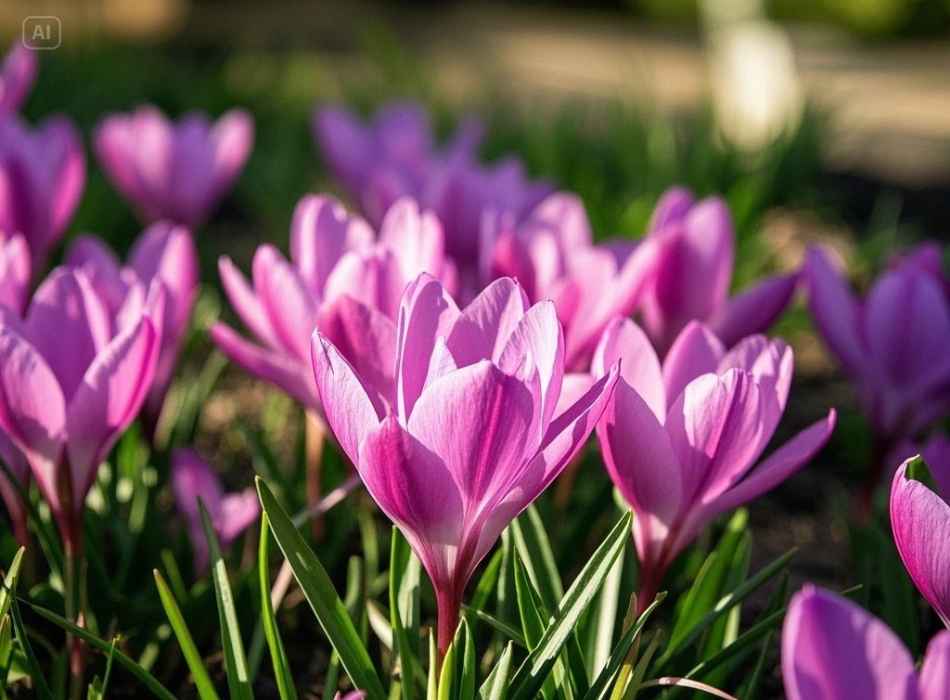
If you’re gearing up for a spring revival in your flower bed, focus on flowers that love the cool yet warming temperatures:
- California Poppies: This state flower thrives in full sun and is easy to grow. It’s perfect for adding bright orange and yellow to your flower bed.
- Snapdragons: An excellent choice for early spring, snapdragons offer vibrant colours and grow well in cool weather.
- Sweet Alyssum: Known for its dainty clusters and lovely scent, sweet alyssum is a low-maintenance flower ideal for borders. It can also be grown in hanging baskets for a cascading effect.
- Primroses: With their cheerful and delicate blooms, primroses are perfect for early spring. They come in a variety of colours, and partial shade is preferred.
- Daffodils: A classic spring flower, daffodils offer bright pops of yellow and white to any garden. They thrive in full sun or partial shade.
Consider the location: When choosing which flowers to plant, consider the amount of sunlight your flower bed receives. Some flowers, like California poppies and snapdragons, thrive in full sun, while others, like begonias and impatiens,
Choose complementary colours: When planning your flower bed, consider choosing flowers with complementary colours to create a visually appealing display. For example, pairing purple irises with yellow daffodils or pink tulips with blue hyacinths can create a vibrant and eye-catching colour scheme.
Mix it up: Don’t be afraid to mix different types of flowers in your spring flower bed. Combining early blooming bulbs like snowdrops
Late Spring to Early Summer
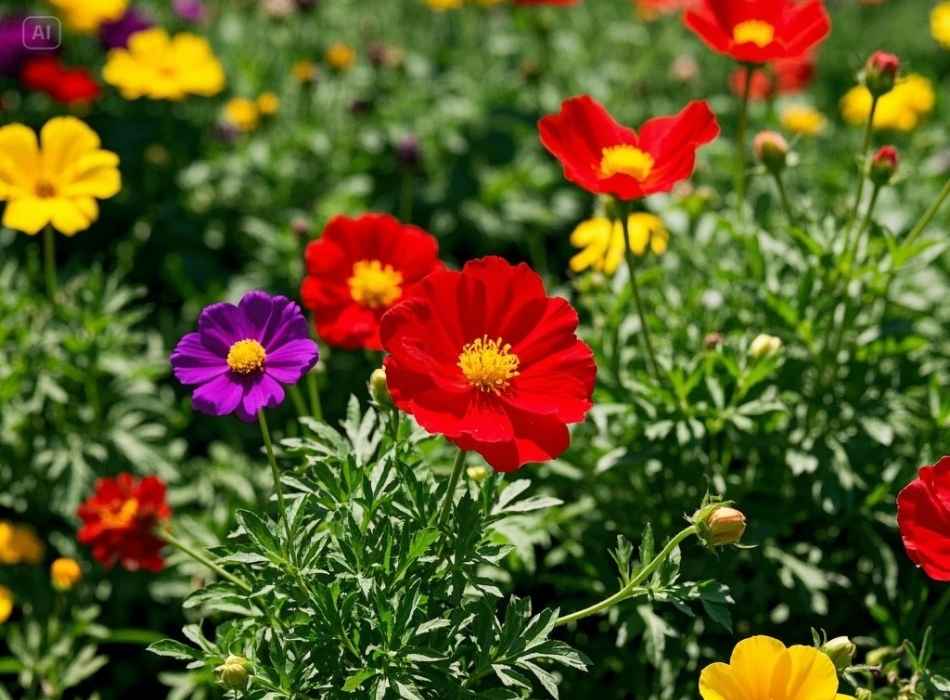
With warmer temperatures settling in, your flower bed can handle more heat-tolerant blooms:
- Zinnias: These hardy flowers come in vivid colours and can tolerate hot weather. They are ideal for Central Valley gardeners.
- Marigolds: Pest-resistant and perfect for adding golden hues to your flower bed. Marigolds also thrive in various soils.
- Lavender: Known for its fragrance, lavender is a good choice for coastal and inland gardens. Its fragrant flowers attract pollinators.
- Dahlias: With their intricate petals and vibrant colours, dahlias add a touch of elegance to any garden. They do well in sunny and partially shaded areas.
Don’t forget to also plan for the summer months by planting heat-loving perennials like coneflowers, black-eyed Susans, and daylilies. These plants will continue to bloom throughout the summer and even into fall.
Summer
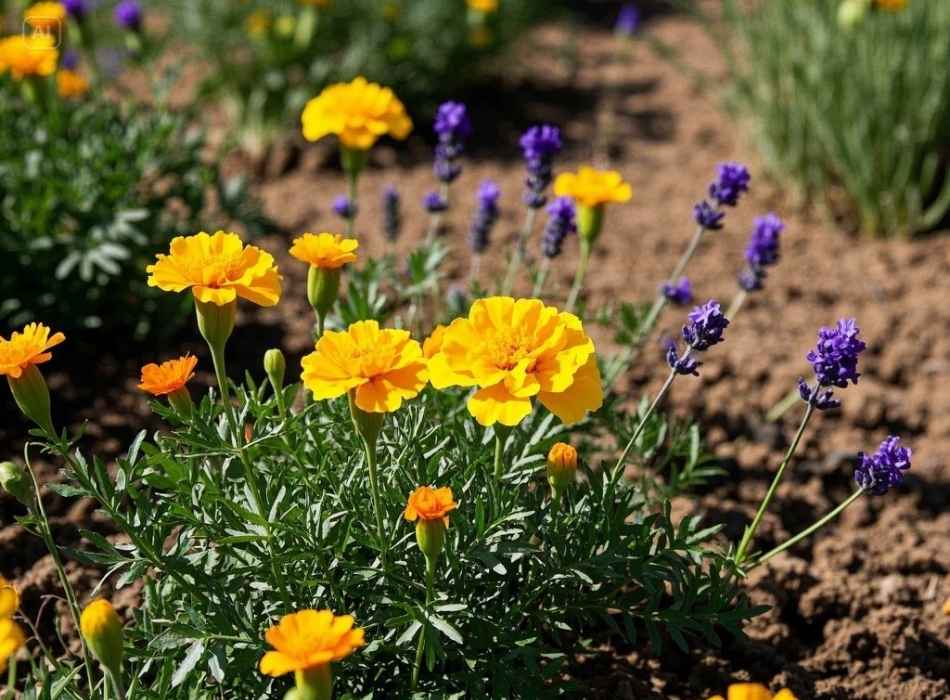
The long, sunny days of the California summer call for drought-resistant and heat-tolerant flowers:
- Sunflowers: A classic summer flower, sunflowers are easy to grow and bring cheerful energy to your flower bed.
- Cosmos: These fast-growing flowers bloom all summer long and attract pollinators like bees and butterflies.
- Salvia: Perfect for a pop of purple or red, salvia is heat-tolerant and thrives in California’s warm climate.
- Dahlias: These colourful, dramatic flowers come in a variety of sizes and bloom all summer until the first frost.
- Zinnias: With vibrant hues and long-lasting blooms, zinnias are a popular choice for summer flower beds.
- California poppies: The state flower of California, these bright orange beauties are drought-resistant and easy to grow.
- Lavender: This fragrant plant thrives in the dry heat and adds visual interest with its purple spikes.
- Yarrow: With delicate white or yellow flowers, yarrow is a versatile plant that can add texture to your garden.
- Sage: This herb not only adds flavour to your cooking but also attracts pollinators like butterflies and hummingbirds.
- Agave: These succulents are perfect for low-water gardens and come in a variety of sizes and colours.
Other ways to conserve water in your summer garden include using mulch to retain moisture and setting up a drip irrigation system. Additionally, grouping plants with similar watering needs together can help reduce water usage.
Fall
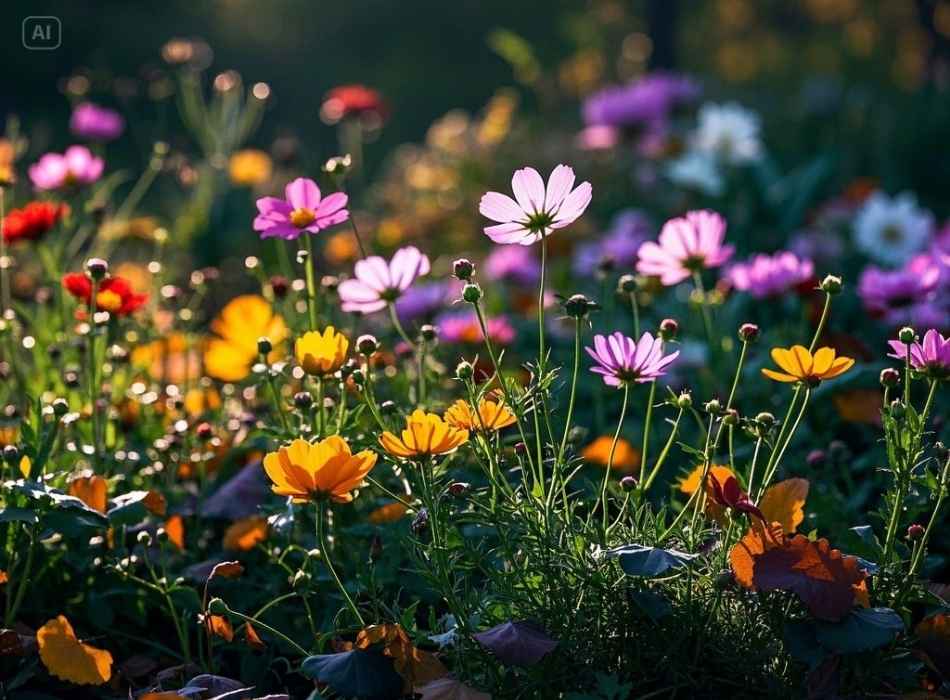
Fall presents an opportunity to plant flowers that thrive during cooler days and nights:
- Chrysanthemums: A quintessential autumn flower, mums come in a variety of colours and are perfect for seasonal beds.
- Pansies: These cool-season blooms offer vibrant colours and can last through early winter in many parts of California.
- Calendula: Known for its bright yellow and orange flowers, calendula thrives in mild autumn weather. It is also edible and makes a great addition to salads or teas.
- Snapdragons: These tall, colourful flowers, in shades of pink, purple, white, and yellow, add a whimsical touch to any fall garden.
- Asters: Asters produce small, daisy-like blooms in various shades of pink, purple, and blue. They are relatively easy to grow and attract pollinators like bees and butterflies.
- Lavender: Although typically associated with summer gardens, specific varieties of lavender can thrive during the cooler months. Their calming scent and beautiful purple blooms make them a must-have for any autumn garden.
Winter
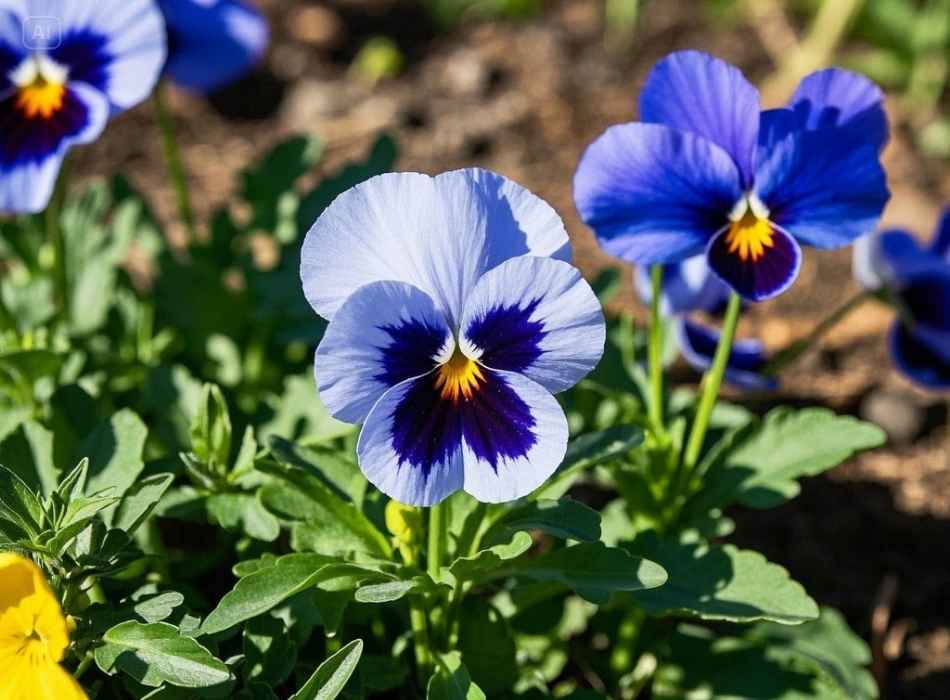
Yes, you can plant in winter, too! California’s mild winters (especially in coastal and southern regions) allow for hardy flowers like:
- Cyclamen: These flowers bloom in shades of pink, red, and white and thrive in shaded areas.
- Primroses: An excellent option for adding winter colour, primroses are frost-tolerant and thrive in partial shade.
- Stock: Known for its sweet scent, the stock offers a splash of pastel colours and grows well in cool weather.
Prune: Winter is the best time to prune deciduous trees and shrubs while they are dormant. This helps promote new growth in spring.
Weed: It may seem like a never-ending task, but weeding during winter prevents weeds from taking over your garden in spring.
Mulch: Adding a layer of mulch around plants helps retain moisture and regulate soil temperature during winter.
Water: While plants don’t require as much water in winter, it’s important to check soil moisture levels regularly and water when necessary. This is especially true for potted plants.
Protect: To protect delicate plants from frost, cover them with a cloth or blanket overnight. You can also use frost cloths or plastic covers specifically designed for this purpose.
Fertilize: Avoid fertilizing during the winter months, as most plants are dormant and do not require additional nutrients. Wait until spring to start fertilizing again.
Indoor Gardening: If you live in a cold climate where outdoor gardening is not possible during the winter months, consider starting an indoor garden. With the proper lighting and conditions, you can grow herbs, vegetables, and even some fruit trees indoors.
Gardening Activities: Just because it’s winter doesn’t mean you can’t still enjoy gardening activities. Consider starting a compost bin or organizing your gardening tools. This is also a great time to plan for your spring garden and research new plants to add to your collection.
Year-Round Plants: Some plants thrive in the colder months and can add colour to your winter garden. Consider planting evergreens, holly bushes, and winter-blooming flowers such as pansies or cyclamen.
Tips for Successful Gardening in California
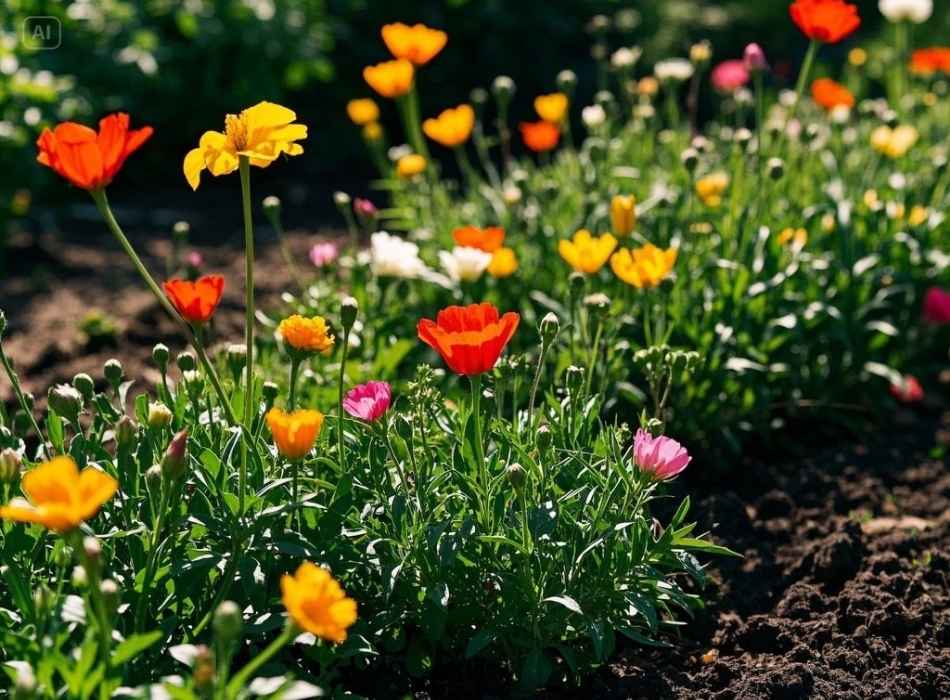
Growing a beautiful flower bed year-round in California isn’t just about choosing the right flowers. Here are some tips to ensure success:
1. Match Flowers to Your Region
Choose flowers that are compatible with the temperature and soil conditions of your region. For example, drought-tolerant flowers like lavender and California poppies do well in hot, dry areas.
2. Work with Native Plants
Consider incorporating California native flowers, such as lupines, monkeyflowers, and yarrow. They are adapted to the local environment and require less maintenance, water, and fertilizers.
3. Prepare Your Soil
California soil can vary from sandy to clay-heavy. Before planting, enrich your soil with compost or organic matter to improve its structure and nutrient levels.
4. Water Wisely
California’s climate means water management is key. Install drip irrigation to conserve water and ensure it reaches the root zone. Water should be used early in the morning to reduce evaporation.
5. Attract Pollinators
Choose flowers like milkweed or lantana to attract bees, butterflies, and hummingbirds. Pollinators play a crucial role in the health of your flower bed and surrounding environment.
6. Prune and Maintain
Regularly deadhead your flowers to encourage new blooms. Remove weeds promptly and add a layer of mulch to retain moisture and control weed growth. Look for any signs of diseases or pests and treat accordingly to prevent them from spreading.
7. Consider Companion Planting
Certain plants benefit from being planted near each other. For example, marigolds can repel pests that may damage your flowers. Research on companion planting to determine what combinations work best in your garden.
8. Monitor and Adjust
Pay attention to how your flower bed is doing throughout the season and make adjustments as needed. This could include adjusting watering schedules, adding more fertilizer or compost, or relocating certain plants if they are not thriving in their current location.
9. Get Creative with Containers
Don’t limit yourself to just a traditional flower bed. Get creative and use containers of various sizes, shapes, and materials to add colour and interest to your garden. You can even repurpose old items like buckets, tyres, or teapots as unique planters.
10. Experiment with Different Varieties
Don’t be afraid to try new types of flowers in your garden. Experiment with different varieties and colours to find what works best for your space. You may discover some new favourites that you wouldn’t have thought of before.
11. Enjoy the Process
Gardening should be a fun and enjoyable experience, so don’t forget to take time to sit back and appreciate your hard work. Spend a morning or afternoon admiring your garden, and invite some friends over for a picnic or barbecue to show off your beautiful flowers.
12. Stay Consistent with Maintenance
To ensure that your garden continues to thrive, it’s essential to stay consistent with maintenance tasks such as watering, weeding, and fertilizing. Set a schedule and make sure to stick to it, taking into account any changes in weather patterns or plant growth.
13. Consider Adding Accessories
Add an extra touch of personality and charm to your flower garden by incorporating accessories like bird feeders, wind chimes, or decorative stepping stones. These simple additions can add character and attract wildlife to your garden. Be sure to choose accessories that complement the overall aesthetic of your garden and don’t overcrowd the space.
14. Grow a Variety of Plants
To create a diverse and visually appealing flower garden, consider growing different types of plants, such as perennials, annuals, bulbs, and shrubs. Each type has its unique qualities and can add depth and interest to your garden. Plus, having a mix of plants can ensure that there is always something blooming throughout the year.
Why Urban and New Gardeners Should Try Flower Beds
Even if you’re an urban gardener with limited space or a beginner, flower beds are a great way to explore your green thumb. If outdoor space is limited, consider raised flower beds or window boxes.
Growing flowers doesn’t just beautify your space; it also contributes to better biodiversity, air quality, and mental well-being. Plus, there’s nothing more rewarding than watching your garden grow!
Start Planting Today
California’s climate gives gardeners a unique advantage. Whether you’re planting in early spring, the height of summer, or even winter, there’s something you can add to your flower bed every season. By selecting plants suited to your region and caring for them with thoughtful watering and maintenance, you can create a lush, vibrant flower bed that thrives year-round.
If you’re ready to get started but need a little extra support, visit your local garden centre or connect with online gardening forums to find expert advice tailored to your needs. Remember, gardening is about patience and joy, so don’t be afraid to experiment and learn as you go.
Happy planting!










